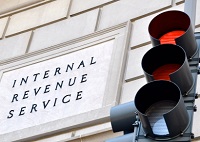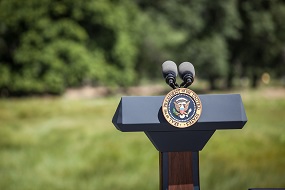We’ve posted previously about some potential changes or clarifications in the donor advised fund (“DAF”) landscape around private benefit and public support contained in Notice 2017-73. In addition, the Notice requested public comments on a few more DAF issues involving private foundations and multiple donor funds.
Multiple unrelated donors. The Notice requests comments on additional considerations for DAFs with multiple unrelated donors with respect to the potential public support changes discussed last week. However, organizations should take this opportunity to seek definitional clarification in this area because the law currently leaves room for differing views on whether a fund with multiple unrelated donors is indeed a DAF.
More specifically, a DAF is defined in Section 4966 as a fund or account:
- that is separately identified by reference to contributions of a donor or donors;
- that is owned or controlled by a sponsoring organization; and
- with respect to which the donor (or an appointee/designee of the donor) has or expects to have advisory privileges as to the distribution or investment of funds by reason of the donor’s status as a donor.
This is particularly relevant in the scholarship area, because DAFs in general cannot award grants to individuals. There is a narrow exception for scholarships, which requires that:
- donors participate only as a member of selection committee;
- the sponsoring organization appoint the entire committee;
- donors and related parties do not control the committee;
- scholarships be awarded in an objective and nondiscriminatory manner, pursuant to a plan pre-approved by the sponsoring organization; and
- scholarship procedures comply with general rules that apply to private foundations.
A typical scholarship DAF set up by a couple at a community foundation, for example, might carry the couple’s name and have them appointed as members of the selection committee by the community foundation, with the other appointed three members consisting of individuals who are not donors to the fund and are not related to the donors (e.g., a professor in a relevant area or a community member). However, scholarship DAFs sometimes are organized using a giving circle model, where many unrelated donors contribute and then collectively select recipients by majority vote. It is not certain whether this type of fund in all cases would be considered “separately identified by reference to contributions of donors.” If it is, then the arrangement is potentially problematic because donors are controlling the selection process.
Clarification in this area would be a relief for organizations holding scholarship funds from multiple donors, so that they can fully understand how to structure and manage funds.
Private foundation issues. Under Section 4942 of the Code, private foundations must distribute five percent of their non-charitable use assets each year as qualifying distributions—typically as grants or program-related investments. The rationale behind this is to get funds for which foundation donors presumably have received a tax deduction out into the community, rather than staying within the foundation. There is concern, though, that moving funds out of a private foundation to a DAF doesn’t accomplish this goal if the funds are able to sit in the DAF indefinitely. The IRS is therefore also requesting comments on how private foundations use DAFs in support of their purposes. Specifically, whether a distribution from a private foundation to a DAF should count as a qualifying distribution within the required timeframe under Section 4942.
All in all, many private foundations open DAFs to use in the accomplishment of their mission for a variety of reasons. Those foundations should consider commenting and ensuring the IRS is aware that these arrangements aren’t about skirting the qualifying distribution rules.
How to comment. Written comments may be submitted by March 5, 2018 to Internal Revenue Service, CC:PA:LPD:PR (Notice 2017-73), Room 5203, P.O. Box 7604, Ben Franklin Station, Washington, DC 20044, or electronically to Notice.Comments@irscounsel.treas.gov (please include “Notice 2017-73” in the subject line).
Alternatively, comments may be hand delivered between the hours of 8:00 a.m. and 4:00 p.m. Monday to Friday to CC:PA:LPD:PR (Notice 2017-73), Courier’s Desk, Internal Revenue Service, 1111 Constitution Avenue NW, Washington, D.C. 20224. Be aware that comments will be available for public inspection and copying.


